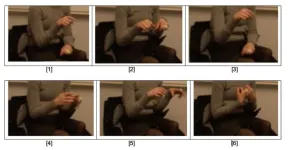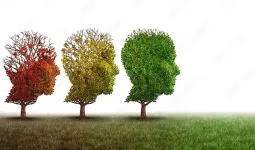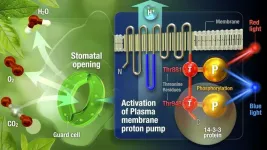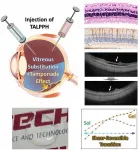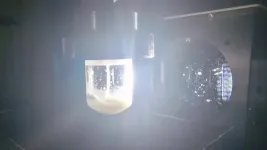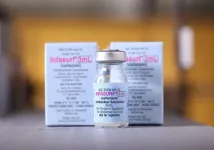A global collaborative research group comprising 131 researchers from 105 laboratories across seven countries announces a groundbreaking research paper submitted to eLife. Titled "Large-scale Animal Model Study Uncovers Altered Brain pH and Lactate Levels as a Transdiagnostic Endophenotype of Neuropsychiatric Disorders Involving Cognitive Impairment," the study identifies brain energy metabolism dysfunction leading to altered pH and lactate levels as common hallmarks in numerous animal models of neuropsychiatric and neurodegenerative disorders, such as intellectual disability, autism spectrum disorders, schizophrenia, bipolar disorder, depressive disorders, and Alzheimer’s disease.
At the forefront of neuroscience research, the research group sheds light on altered energy metabolism as a key factor in various neuropsychiatric and neurodegenerative disorders. While considered controversial, an elevated lactate level and the resulting decrease in pH is now also proposed as a potential primary component of these diseases. Unlike previous assumptions associating these changes with external factors like medicationa, the research group's previous findings suggest that they may be intrinsic to the disorders. This conclusion was drawn from five animal models of schizophrenia/developmental disorders, bipolar disorder, and autism, which are exempt from such confounding factorsb. However, research on brain pH and lactate levels in animal models of other neuropsychiatric and neurological disorders has been limited. Until now, it was unclear whether such changes in the brain were a common phenomenon. Additionally, the relationship between alterations in brain pH and lactate levels and specific behavioral abnormalities had not been clearly established.
This study, encompassing 109 strains/conditions of mice, rats, and chicks, including animal models related to neuropsychiatric conditions, reveals that changes in brain pH and lactate levels are a common feature in a diverse range of animal models of diseases, including schizophrenia/developmental disorders, bipolar disorder, autism, as well as models of depression, epilepsy, and Alzheimer's disease. This study's significant insights include:
I. Common Phenomenon Across Disorders: About 30% of the 109 types of animal models exhibited significant changes in brain pH and lactate levels, emphasizing the widespread occurrence of energy metabolism changes in the brain across various neuropsychiatric conditions.
II. Environmental Factors as a Cause: Models simulating depression through psychological stress, and those induced to develop diabetes or colitis, which have a high comorbidity risk for depression, showed decreased brain pH and increased lactate levels. Various acquired environmental factors could contribute to these changes.
III. Cognitive Impairment Link: A comprehensive analysis integrating behavioral test data revealed a predominant association between increased brain lactate levels and impaired working memory, illuminating an aspect of cognitive dysfunction.
IV. Confirmation in Independent Cohort: These associations, particularly between higher brain lactate levels and poor working memory performance, were validated in an independent cohort of animal models, reinforcing the initial findings.
V. Autism Spectrum Complexity: Variable responses were noted in autism models, with some showing increased pH and decreased lactate levels, suggesting subpopulations within the autism spectrum with diverse metabolic patterns.
"This is the first and largest systematic study evaluating brain pH and lactate levels across a range of animal models for neuropsychiatric and neurodegenerative disorders. Our findings may lay the groundwork for new approaches to develop the transdiagnostic characterization of different disorders involving cognitive impairment," states Dr. Hideo Hagihara, the study's lead author.
Professor Tsuyoshi Miyakawa, the corresponding author, explains, "This research could be a stepping stone towards identifying shared therapeutic targets in various neuropsychiatric disorders. Future studies will center on uncovering treatment strategies that are effective across diverse animal models with brain pH changes. This could significantly contribute to developing tailored treatments for patient subgroups characterized by specific alterations in brain energy metabolism."
In this paper, the mechanistic insights into the reduction in pH and the increase in lactate levels remain elusive. However, it is known that lactate production increases in response to neural hyperactivity to meet the energy demand, and the authors seem to think this might be the underlying reason.
References
a. Halim ND, Lipska BK, Hyde TM, Deep-Soboslay A, Saylor EM, Herman M, et al (2008). Increased lactate levels and reduced pH in postmortem brains of schizophrenics: medication confounds. Journal of Neuroscience Methods 169(1): 208–213.
b. Hagihara H, Catts VS, Katayama Y, Shoji H, Takagi T, Huang FL, et al (2018). Decreased Brain pH as a Shared Endophenotype of Psychiatric Disorders. Neuropsychopharmacology 43(3): 459–468.
Title of original paper
Large-scale animal model study uncovers altered brain pH and lactate levels as a transdiagnostic endophenotype of neuropsychiatric disorders involving cognitive impairment
Journal
eLife
Authors
Hideo Hagihara1, Hirotaka Shoji1, Satoko Hattori1, Giovanni Sala1, Yoshihiro Takamiya1, Mika Tanaka1, Masafumi Ihara2, Mihiro Shibutani3, Izuho Hatada3, Kei Hori4, Mikio Hoshino4, Akito Nakao5, Yasuo Mori5, Shigeo Okabe6, Masayuki Matsushita7, Anja Urbach8, Yuta Katayama9, Akinobu Matsumoto9, Keiichi I. Nakayama9, Shota Katori10, Takuya Sato10, Takuji Iwasato10, Haruko Nakamura11, Yoshio Goshima11, Matthieu Raveau12, Tetsuya Tatsukawa12, Kazuhiro Yamakawa12, 13, Noriko Takahashi14, 15, Haruo Kasai14, 16, Johji Inazawa17, Ikuo Nobuhisa18, Tetsushi Kagawa18, Tetsuya Taga18, Mohamed Darwish19, 20, Hirofumi Nishizono21, Keizo Takao20, 22, Kiran Sapkota23, Kazutoshi Nakazawa23, Tsuyoshi Takagi24, Haruki Fujisawa25, Yoshihisa Sugimura25, Kyosuke Yamanishi26, Lakshmi Rajagopal27, Nanette Deneen Hannah27, Herbert Y. Meltzer27, Tohru Yamamoto28, Shuji Wakatsuki29, Toshiyuki Araki29, Katsuhiko Tabuchi30, Tadahiro Numakawa31, Hiroshi Kunugi31, 32, Freesia L. Huang33, Atsuko Hayata-Takano34-36, Hitoshi Hashimoto34, 36-39, Kota Tamada40, 41, Toru Takumi40, 41, Takaoki Kasahara42, 43, Tadafumi Kato42, 44, Isabella A. Graef45, Gerald R. Crabtree45, Nozomi Asaoka46, Hikari Hatakama47, Shuji Kaneko47, Takao Kohno48, Mitsuharu Hattori48, Yoshio Hoshiba49, Ryuhei Miyake50, Kisho Obi-Nagata50, Akiko Hayashi-Takagi49, 50, Léa J. Becker51, Ipek Yalcin51, Yoko Hagino52, Hiroko Kotajima-Murakami52, Yuki Moriya52, Kazutaka Ikeda52, Hyopil Kim53, 54, Bong-Kiun Kaang53, 55, Hikari Otabi56, 57, Yuta Yoshida56, Atsushi Toyoda56-58, Noboru H. Komiyama59, 60, Seth G. N. Grant59, 60, Michiru Ida-Eto61, Masaaki Narita61, Ken-ichi Matsumoto62, Emiko Okuda-Ashitaka63, Iori Ohmori64, Tadayuki Shimada65, Kanato Yamagata65, Hiroshi Ageta66, Kunihiro Tsuchida66, Kaoru Inokuchi67-69, Takayuki Sassa70, Akio Kihara70, Motoaki Fukasawa71, Nobuteru Usuda71, Tayo Katano72, Teruyuki Tanaka73, Yoshihiro Yoshihara74, Michihiro Igarashi75, 76, Takashi Hayashi77, Kaori Ishikawa78, 79, Satoshi Yamamoto80, Naoya Nishimura80, Kazuto Nakada78, 79, Shinji Hirotsune81, Kiyoshi Egawa82, Kazuma Higashisaka83, Yasuo Tsutsumi83, Shoko Nishihara84, Noriyuki Sugo85, Takeshi Yagi85, Naoto Ueno86, Tomomi Yamamoto87, Yoshihiro Kubo87, Rie Ohashi88-90, Nobuyuki Shiina88-90, Kimiko Shimizu91, Sayaka Higo-Yamamoto92, Katsutaka Oishi92-95, Hisashi Mori96, Tamio Furuse97, Masaru Tamura97, Hisashi Shirakawa98, Daiki X. Sato1, 99, Yukiko U. Inoue100, Takayoshi Inoue100, Yuriko Komine101, 102 , Tetsuo Yamamori102, 103, Kenji Sakimura104, 105, Tsuyoshi Miyakawa1
Affiliations
Division of Systems Medical Science, Center for Medical Science, Fujita Health University, Toyoake, Aichi 470-1192, Japan
Department of Neurology, National Cerebral and Cardiovascular Center, Suita, Osaka 564-8565, Japan
Laboratory of Genome Science, Biosignal Genome Resource Center, Institute for Molecular and Cellular Regulation, Gunma University, Maebashi, Gunma 371-8512, Japan
Department of Biochemistry and Cellular Biology, National Institute of Neuroscience, National Center of Neurology and Psychiatry, Kodaira, Tokyo 187-8502, Japan
Department of Synthetic Chemistry and Biological Chemistry, Graduate School of Engineering, Kyoto University, Kyoto, Kyoto 615-8510, Japan
Department of Cellular Neurobiology, Graduate School of Medicine, The University of Tokyo, Tokyo 113-0033, Japan
Department of Molecular and Cellular Physiology, Graduate School of Medicine, University of the Ryukyus, Nishihara, Okinawa 903-0215, Japan
Department of Neurology, Jena University Hospital, 07747 Jena, Germany
Department of Molecular and Cellular Biology, Medical Institute of Bioregulation, Kyushu University, Fukuoka, Fukuoka 812-8582, Japan
Laboratory of Mammalian Neural Circuits, National Institute of Genetics, Mishima, Shizuoka 411-8540, Japan
Department of Molecular Pharmacology and Neurobiology, Yokohama City University Graduate School of Medicine, Yokohama, Kanagawa 236-0004, Japan
Laboratory for Neurogenetics, RIKEN Center for Brain Science, Wako, Saitama 351-0198, Japan
Department of Neurodevelopmental Disorder Genetics, Institute of Brain Sciences, Nagoya City University Graduate School of Medical Sciences, Nagoya, Aichi 467-8601, Japan
Laboratory of Structural Physiology, Center for Disease Biology and Integrative Medicine, Faculty of Medicine, The University of Tokyo, Tokyo 113-0033, Japan
Department of Physiology, Kitasato University School of Medicine, Sagamihara, Kanagawa 252-0374, Japan
International Research Center for Neurointelligence (WPI-IRCN), UTIAS, The University of Tokyo, Tokyo 113-0033, Japan
Research Core, Tokyo Medical and Dental University, Tokyo 113-8510, Japan
Department of Stem Cell Regulation, Medical Research Institute, Tokyo Medical and Dental University, Tokyo 113-8510, Japan
Department of Biochemistry, Faculty of Pharmacy, Cairo University, Cairo 11562, Egypt
Department of Behavioral Physiology, Graduate School of Innovative Life Science, University of Toyama, Toyama, Toyama 930-0194, Japan
Medical Research Institute, Kanazawa Medical University, Uchinada, Kahoku, Ishikawa920-0293, Japan
Department of Behavioral Physiology, Faculty of Medicine, University of Toyama, Toyama, Toyama 930-0194, Japan
Department of Neuroscience, Southern Research, Birmingham, AL 35205, USA
Institute for Developmental Research, Aichi Developmental Disability Center, Kasugai, Aichi 480-0392, Japan
Department of Endocrinology, Diabetes and Metabolism, School of Medicine, Fujita Health University, Toyoake, Aichi 470-1192, Japan
Department of Neuropsychiatry, Hyogo Medical University, School of Medicine, Nishinomiya, Hyogo 663-8501, Japan
Department of Psychiatry and Behavioral Sciences, Northwestern University Feinberg School of Medicine, Chicago, IL 60611, USA
Department of Molecular Neurobiology, Faculty of Medicine, Kagawa University, Kita-gun, Kagawa 761-0793, Japan
Department of Peripheral Nervous System Research, National Institute of Neuroscience, National Center of Neurology and Psychiatry, Kodaira, Tokyo 187-8502, Japan
Department of Molecular & Cellular Physiology, Shinshu University School of Medicine, Matsumoto, Nagano 390-8621, Japan
Department of Mental Disorder Research, National Institute of Neuroscience, National Center of Neurology and Psychiatry, Kodaira, Tokyo 187-8502, Japan
Department of Psychiatry, Teikyo University School of Medicine, Tokyo 173-8605, Japan.
Program of Developmental Neurobiology, National Institute of Child Health and Human Development, National Institute of Health, Bethesda, MD 20892, USA
Laboratory of Molecular Neuropharmacology, Graduate School of Pharmaceutical Sciences, Osaka University, Suita, Osaka 565-0871, Japan
Department of Pharmacology, Graduate School of Dentistry, Osaka University, Suita, Osaka 565-0871, Japan
United Graduate School of Child Development, Osaka University, Kanazawa University, Hamamatsu University School of Medicine, Chiba University and University of Fukui, Suita, Osaka 565-0871, Japan
Division of Bioscience, Institute for Datability Science, Osaka University, Suita, Osaka 565-0871, Japan
Transdimensional Life Imaging Division, Institute for Open and Transdisciplinary Research Initiatives, Osaka University, Suita, Osaka 565-0871, Japan
Department of Molecular Pharmaceutical Science, Graduate School of Medicine, Osaka University, Suita, Osaka 565-0871, Japan
RIKEN Brain Science Institute, Wako, Saitama 351-0198, Japan
Department of Physiology and Cell Biology, Kobe University School of Medicine, Kobe, Hyogo 650-0017, Japan
Laboratory for Molecular Dynamics of Mental Disorders, RIKEN Center for Brain Science, Wako, Saitama 351-0198, Japan
Institute of Biology and Environmental Sciences, Carl von Ossietzky University of Oldenburg, Oldenburg 26129, Germany
Department of Psychiatry and Behavioral Science, Juntendo University Graduate School of Medicine, Tokyo 113-8421, Japan
Department of Pathology, Stanford University School of Medicine, Stanford, CA 94305, USA
Department of Pharmacology, Kyoto Prefectural University of Medicine, Kyoto, Kyoto 602-8566, Japan
Department of Molecular Pharmacology, Graduate School of Pharmaceutical Sciences, Kyoto University, Kyoto, Kyoto 606-8501, Japan
Department of Biomedical Science, Graduate School of Pharmaceutical Sciences, Nagoya City University, Nagoya, Aichi 467-8603, Japan
Laboratory of Medical Neuroscience, Institute for Molecular and Cellular Regulation, Gunma University, Maebashi, Gunma 371-8512, Japan
Laboratory for Multi-scale Biological Psychiatry, RIKEN Center for Brain Science, Wako, Saitama 351-0198, Japan
Institut des Neurosciences Cellulaires et Intégratives, Centre National de la Recherche Scientifique, Université de Strasbourg, Strasbourg 67000, France
Addictive Substance Project, Tokyo Metropolitan Institute of Medical Science, Tokyo 156-8506, Japan
Department of Biological Sciences, College of Natural Sciences, Seoul National University, Seoul 08826, Republic of Korea
Department of Biomedical Engineering, Johns Hopkins School of Medicine, Baltimore, MD21205, USA
Center for Cognition and Sociality, Institute for Basic Science (IBS), Daejeon 34141, Republic of Korea
College of Agriculture, Ibaraki University, Ami, Ibaraki 300-0393, Japan
United Graduate School of Agricultural Science, Tokyo University of Agriculture and Technology, Fuchu, Tokyo 183-8538, Japan
Ibaraki University Cooperation between Agriculture and Medical Science (IUCAM), Ami, Ibaraki 300-0393, Japan
Genes to Cognition Program, Centre for Clinical Brain Sciences, University of Edinburgh, Edinburgh EH16 4SB, UK
Simons Initiative for the Developing Brain, Centre for Discovery Brain Sciences, University of Edinburgh, Edinburgh EH8 9XF, UK
Department of Developmental and Regenerative Medicine, Mie University, Graduate School of Medicine, Tsu, Mie 514-8507, Japan
Department of Biosignaling and Radioisotope Experiment, Interdisciplinary Center for Science Research, Organization for Research and Academic Information, Shimane University, Izumo, Shimane 693-8501, Japan
Department of Biomedical Engineering, Osaka Institute of Technology, Osaka 535-8585, Japan
Department of Physiology, Okayama University Graduate School of Medicine, Dentistry and Pharmaceutical Sciences, Okayama, Okayama 700-8530, Japan
Child brain project, Tokyo Metropolitan Institute of Medical Science, Tokyo 156-8506, Japan
Division for Therapies Against Intractable Diseases, Center for Medical Science, Fujita Health University, Toyoake, Aichi 470-1192, Japan
Research Center for Idling Brain Science, University of Toyama, Toyama, Toyama 930-0194, Japan
Department of Biochemistry, Graduate School of Medicine and Pharmaceutical Sciences, University of Toyama, Toyama, Toyama 930-0194, Japan
Core Research for Evolutionary Science and Technology (CREST), Japan Science and Technology Agency (JST), University of Toyama, Toyama, Toyama 930-0194, Japan
Faculty of Pharmaceutical Sciences, Hokkaido University, Sapporo, Hokkaido 060-0812, Japan
Department of Anatomy II, Fujita Health University School of Medicine, Toyoake, Aichi 470-1192, Japan
Department of Medical Chemistry, Kansai Medical University, Hirakata, Osaka 573-1010, Japan
Department of Developmental Medical Sciences, Graduate School of Medicine, The University of Tokyo, Tokyo 113-0033, Japan
Laboratory for Systems Molecular Ethology, RIKEN Center for Brain Science, Wako, Saitama 351-0198, Japan
Department of Neurochemistry and Molecular Cell Biology, School of Medicine, and Graduate School of Medical and Dental Sciences, Niigata University, Niigata, Niigata 951-8510, Japan
Transdiciplinary Research Program, Niigata University, Niigata, Niigata 951-8510, Japan
Biomedical Research Institute, National Institute of Advanced Industrial Science and Technology (AIST), Tsukuba, Ibaraki 305-8566, Japan
Faculty of Life and Environmental Sciences, University of Tsukuba, Tsukuba, Ibaraki 305-8572, Japan
Graduate School of Life and Environmental Sciences, University of Tsukuba, Tsukuba, Ibaraki 305-8572, Japan
Integrated Technology Research Laboratories, Pharmaceutical Research Division, Takeda Pharmaceutical Company, Ltd, Fujisawa, Kanagawa 251-8555, Japan
Department of Genetic Disease Research, Osaka City University Graduate School of Medicine, Osaka, Osaka 545-8585, Japan
Department of Pediatrics, Hokkaido University Graduate School of Medicine, Sapporo, Hokkaido 060-8638, Japan
Laboratory of Toxicology and Safety Science, Graduate School of Pharmaceutical Sciences, Osaka University, Suita, Osaka 565-0871, Japan
Glycan & Life Systems Integration Center (GaLSIC), Soka University, Tokyo 192-8577, Japan
Graduate School of Frontier Biosciences, Osaka University, Suita, Osaka 565-0871, Japan
National Institute for Basic Biology, Laboratory of Morphogenesis, Okazaki, Aichi 444-8585, Japan
Division of Biophysics and Neurobiology, National Institute for Physiological Sciences, Okazaki, Aichi 444-8585, Japan
Laboratory of Neuronal Cell Biology, National Institute for Basic Biology, Okazaki, Aichi 444-8585, Japan
Department of Basic Biology, SOKENDAI (Graduate University for Advanced Studies), Okazaki, Aichi 444-8585, Japan
Exploratory Research Center on Life and Living Systems (ExCELLS), National Institutes of Natural Sciences, Okazaki, Aichi 444-8585, Japan
Department of Biological Sciences, School of Science, The University of Tokyo, Tokyo 113-0033, Japan
Healthy Food Science Research Group, Cellular and Molecular Biotechnology Research Institute, National Institute of Advanced Industrial Science and Technology (AIST), Tsukuba, Ibaraki 305-8566, Japan
Department of Applied Biological Science, Graduate School of Science and Technology, Tokyo University of Science, Noda, Chiba 278-8510, Japan
Department of Computational Biology and Medical Sciences, Graduate School of Frontier Sciences, The University of Tokyo, Kashiwa, Chiba 277-8562, Japan
School of Integrative and Global Majors (SIGMA), University of Tsukuba, Tsukuba, Ibaraki 305-8577, Japan
Department of Molecular Neuroscience, Graduate School of Medicine and Pharmaceutical Sciences, University of Toyama, Toyama, Toyama 930-0194, Japan
Mouse Phenotype Analysis Division, Japan Mouse Clinic, RIKEN BioResource Research Center (BRC), Tsukuba, Ibaraki 305-0074, Japan
Department of Molecular Pharmacology, Graduate School of Pharmaceutical Sciences, Kyoto University, Kyoto, Kyoto 606-8501, Japan
Graduate School of Life Sciences, Tohoku University, Sendai, Miyagi 980-8578, Japan
Department of Biochemistry and Cellular Biology, National Institute of Neuroscience, National Center of Neurology and Psychiatry, Kodaira, Tokyo 187-8502, Japan
Young Researcher Support Group, Research Enhancement Strategy Office, National Institute for Basic Biology, National Institute of Natural Sciences, Okazaki, Aichi 444-8585, Japan
Division of Brain Biology, National Institute for Basic Biology, Okazaki, Aichi 444-8585, Japan
Laboratory for Molecular Analysis of Higher Brain Function, RIKEN Center for Brain Science, Wako, Saitama 351-0198, Japan
Department of Cellular Neurobiology, Brain Research Institute, Niigata University, Niigata, Niigata 951-8585, Japan
Department of Animal Model Development, Brain Research Institute, Niigata University, Niigata, Niigata 951-8585, Japan END
